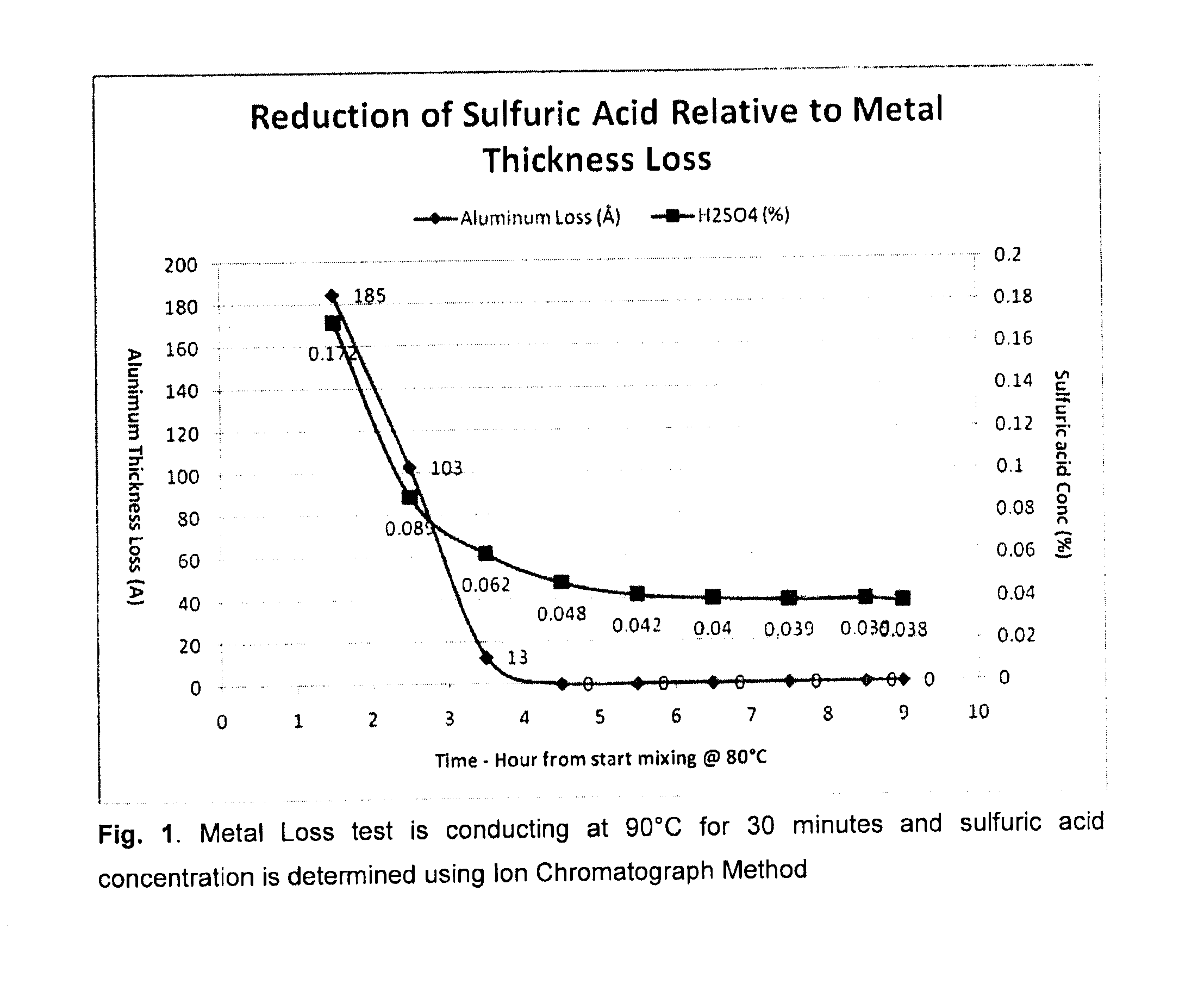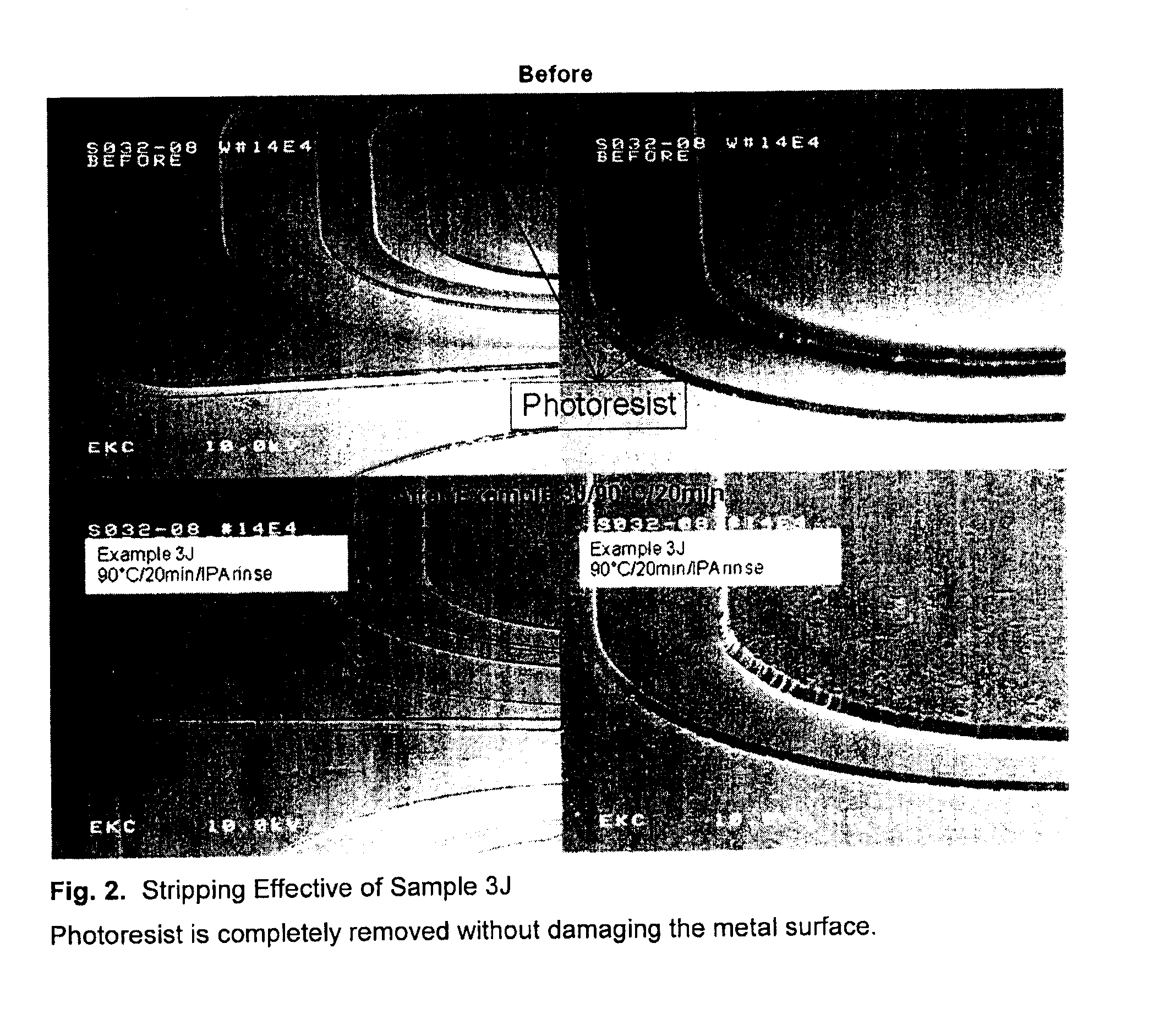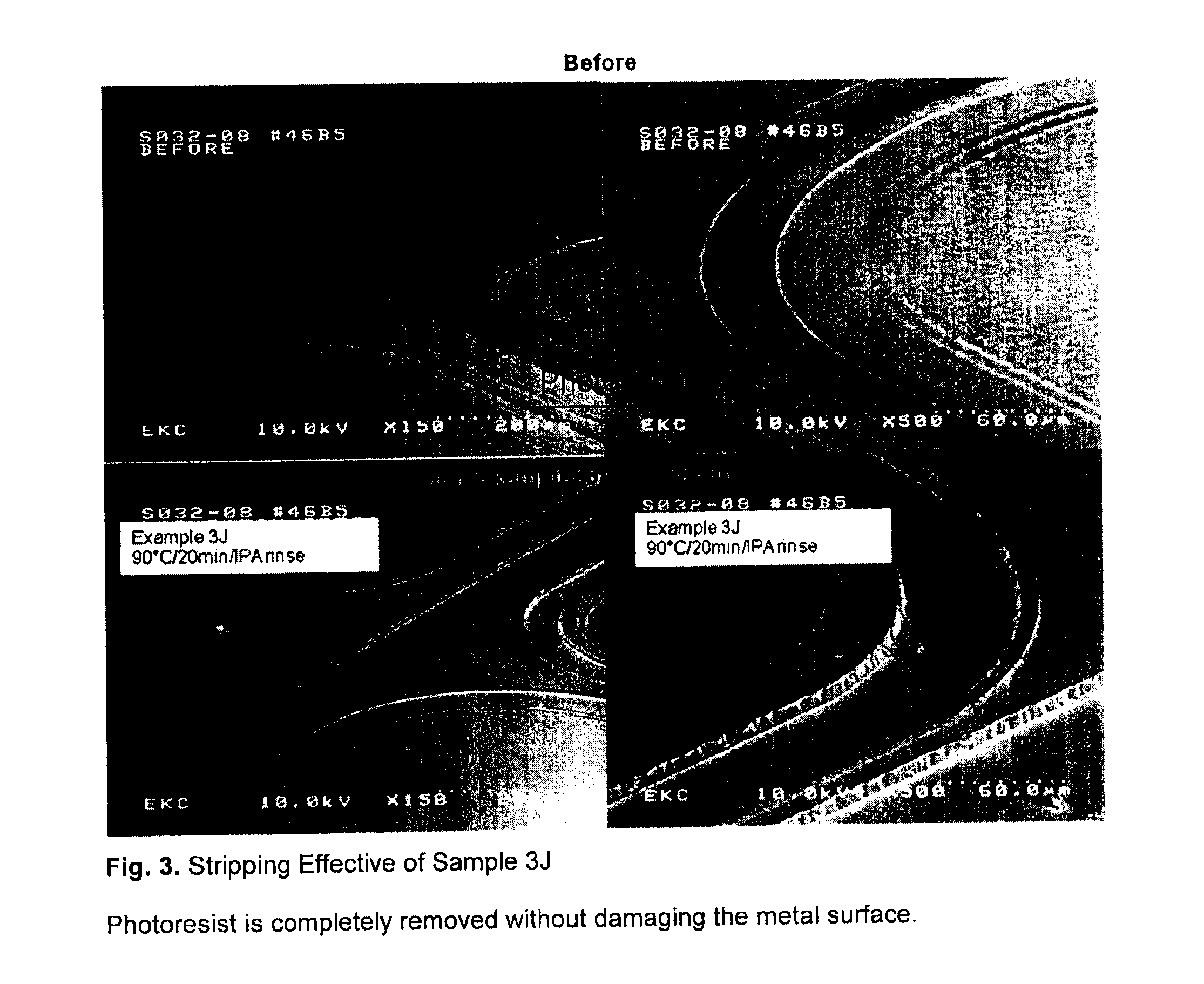Method for making a photoresist stripping solution comprising an organic sulfonic acid and an organic hydrocarbon solvent
- Summary
- Abstract
- Description
- Claims
- Application Information
AI Technical Summary
Benefits of technology
Problems solved by technology
Method used
Image
Examples
example 1
[0066]This example represents a current manufacturing process for a photoresist stripper solution comprising a uniform blend of 35% of LAS-99 Dodecylbenzene sulfonic acid from Pilot Chemical, 60% of Shell Sol 150 aromatic solvent from Shell Chemical and 5% of Catechol from UBE Industries.
[0067]Into a jacketed water heating / cooling blending tank, 2400 Lbs of Shell Sol was introduced to the tank at ambient temperature. After all the solvent had been added, 1400 Lbs of Dodecylbenzene sulfonic acid was gradually added to the aromatic solvent while the mixture was being heated with 85° C. hot water re-circulated in the heating jacket. Initial sample #1A was taken 10 minutes after the solution had reached 80° C. Subsequent samples were taken at 30 minutes sample #1B and 60 minutes sample #1C, just prior the addition of catechol to the mixture. Heating was stopped after 60 minutes when the solution reached 80° C. while 200 Lbs of catechol was being introduced to the blend. A final sample #...
example 2
[0073]This Example was to confirm that a longer heating time at elevated temperature will result in a blend that demonstrates no attack to the metal film.
[0074]A mixture of 65% aromatic solvent and 35% dodecylbenzene sulfonic acid was heated in a round bottom flask equipped with stirrer, condenser, temperature probe and nitrogen inlet. The solution was mixed together and heated to 80° C. Samples were taken after two and eight hours of mixing. Cleaning processing was carried out at 90° C. for 20 minutes, followed by 5 minutes' rinse in IPA and finally rinsed in deionized water.
TABLE 2Laboratory sampleLaboratory samplewas taken after 2 hourswas taken after 8 hoursmixing @ 80° C.mixing @ 80° C.2A2BAromatic / DDBSA100100(65 / 35)Al Thickness Change22 Å0CommentsAttackNo Change
[0075]The result shows that with longer mixing time at 80° C. use of the blend resulted in no aluminum attack.
example 3
[0076]This Example was carried out to further delineate the correlation between metal corrosion and amount of residual sulfuric acid concentration in the blend. It is not necessary to reduce the sulfuric acid concentration to zero, but it is required to reach an optimum level such that it will not cause damage to the metal film.
[0077]A solution, i.e., blend, of 35% dodecylbenzene sulfonic acid from Pilot Chemical was mixed with 65% ShellSol 150A. Samples were taken using the following procedures
Sampling Procedures:
[0078]1. After adding both aromatic / DDBSA mixing at room temperature for 30 minutes—a 200 ml sample was taken for immediate sulfuric acid tests.[0079]2. Begin heating the blend after taking the first sample.[0080]3. A second sample was taken after the blend reached 80° C., and the sample was tested immediately for aluminum etch and sulfuric acid concentration.[0081]4. Additional samples were taken every hour for next 8 hours and tested immediately for aluminum etch and sul...
PUM
 Login to View More
Login to View More Abstract
Description
Claims
Application Information
 Login to View More
Login to View More - R&D
- Intellectual Property
- Life Sciences
- Materials
- Tech Scout
- Unparalleled Data Quality
- Higher Quality Content
- 60% Fewer Hallucinations
Browse by: Latest US Patents, China's latest patents, Technical Efficacy Thesaurus, Application Domain, Technology Topic, Popular Technical Reports.
© 2025 PatSnap. All rights reserved.Legal|Privacy policy|Modern Slavery Act Transparency Statement|Sitemap|About US| Contact US: help@patsnap.com



